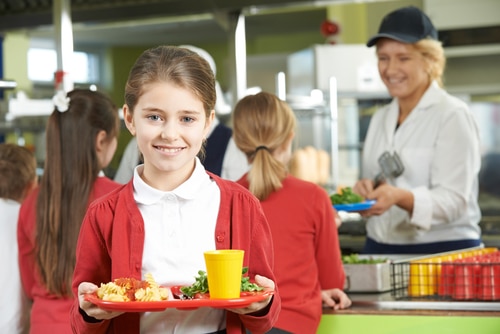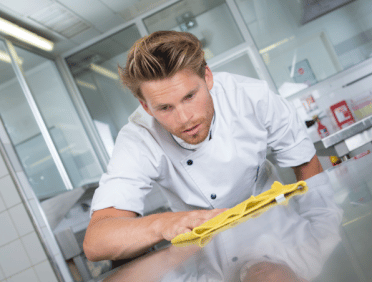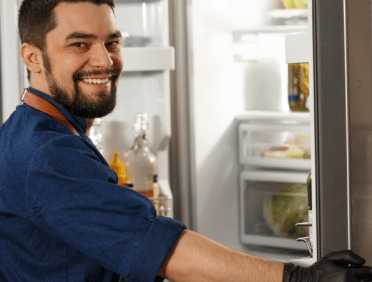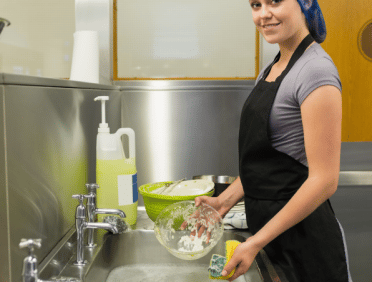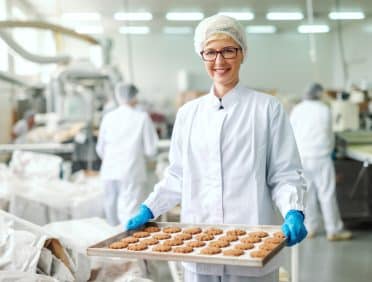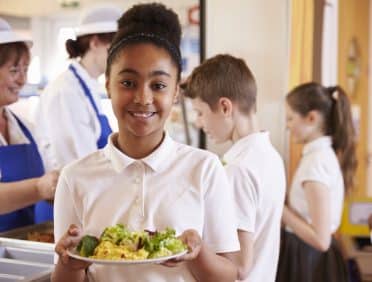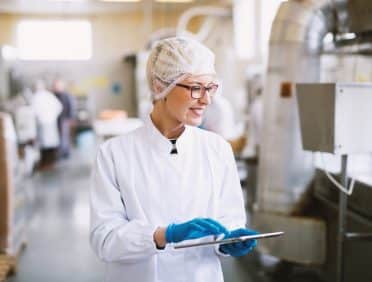Food hygiene is an integral part of working in the kitchen as a student. You need to make sure that you practice food safety and hygiene every day, regardless of the situation!
With that being said, how much do you know about food safety? There’s quite a bit to consider, and you’re expected to know all of it. Let’s take a look at some of the basics of food safety and hygiene.
By exploring the basics here, you should get a firm grasp of things. This will also be a helpful resource you can refer back to.
What is the Guide to Food Safety?
Food safety and hygiene are all about being safe in the kitchen. The way that you interact with different types of food is vital.
You need to have a good grasp of food safety and hygiene to be responsible in the kitchen, prevent disease and illness through cross-contamination and poor hygiene, and make sure that the food you serve to the public is suitable (if you work in a restaurant).
Therefore, a guide to food safety has to cover how to be responsible and how to adopt processes that will help with food safety.
There are five basic food safety rules to keep in mind.
- Maintain a high level of food hygiene. You need to look after your personal hygiene while working with food to prevent the spread of bacteria. You do this by always washing your hands in the right sink and drying them with either a paper towel or allowing them to air dry. Do not ever use a tea towel to dry your hands.
- Prevent cross-contamination. When harmful bacteria are transferred from one food to another or from an object to food, cross-contamination happens. This is one of the most basic rules for health and safety but also one of the most neglected. The consequences of ignoring cross-contamination can be very serious.
- Cook the food to a safe temperature. You need to understand that when it comes to the preparation of food, you have to cook it to the correct temperature. Remembering these temperatures is vital for food hygiene and safety.
- Store all food properly. All food that you have needs to be stored at the correct temperature in the correct place. This helps to ensure that the food is safe for consumption. This rule applies to food that hasn’t been prepared yet or prepared food that is being served at an event. Secure storage is probably the hardest part to get right, but it’s one of the most important rules.
- Control the waste you create. An important part of food safety and hygiene is making sure that you perform regular stock checks to control the waste from expired food. You also need to separate waste from food and place it into a covered bin to prevent the buildup of flies or cross-contamination.
Food poisoning can be a tell-tale sign of poorly prepared food, cross-contamination, or food that should not be served to customers. In the event of food poisoning occurring, businesses will have to take reasonable steps to resolve the issue.
You will need to identify what caused the food poisoning, dispose of it in a safe fashion, clean the entire kitchen from top to bottom, and log all of this in a proper report. After all, if it went to a legal challenge from the affected party, you would need evidence that you took appropriate steps to resolve the issue afterwards.
How to Store Raw Meat
Raw meat is a necessary part of the kitchen environment but needs to be stored in the correct way. You need to put raw meat, fish and poultry into sealed containers. These containers should always be stored at the bottom of the fridge to prevent cross-contamination from occurring.
Each item should be wrapped or sealed in a stored container, so it doesn’t come into any contact with other food. The container should be kept clean and free of meat dripping or food waste. Raw meat is the fastest way to create food poisoning or cross-contamination, so it needs to be stored properly.
How to Store Cooked Food
Storing cooked food is an important part of ensuring food does not go to waste. However, there are specific procedures that need to be followed in order to safely store cooked food.
Cooked food should be allowed to cool completely before storing it in a fridge or freezer. To speed up the cooling process, put the cooked food in a wide dish. Cooked meats should be stored at the bottom of the fridge alongside raw meat, but the two must be kept well away from each other and carefully sealed.
How to Check the Temperature of Your Fridge
The temperature of your fridge must be kept at a consistent level to guarantee food safety. You need to make sure that your fridge is at a suitable temperature all the time.
The fridge part of your refrigerator must be kept at or below 4°C. However, it may not fall below 0°C. The temperature of your freezer should be -18°C. You should check both temperatures periodically using a temperature gauge installed in the fridge and freezer to make sure the temperature is correct.
Cooking Temperatures of Foods
It is important to cook food at a temperature that will allow it to cook all the way through. This is especially important for meat, as bacteria can remain in the middle of the food. The standard advice given to most kitchens is to cook food until it has reached a core temperature of 70°C for two minutes. However, there are subtle variations of those that are acceptable.
Variations include 60°C for 45 minutes, 65°C for 10 minutes, 75°C for 30 seconds, and 80°C for 60 seconds. However, where possible, the core temperature of 70°C for two minutes should be used as the standard.
Cook Your Food Thoroughly
Taking the time to cook food thoroughly is very important. There are lots of foods, like meat, where bacteria can be present in the middle of the food, which means if you haven’t cooked it through, the bacteria is still there.
It’s important to follow core cooking times for food preparation. Remember to have a proper thermometer be used to check the internal temperature of the meat. However, the thermometer should be cleaned after each use.
How to Reheat Leftover Food Safely
It is possible to reheat leftover food in a safe manner, but it’s necessary to do so in the correct way.
You should always reheat food until it is steaming hot all the way through, and this should only be done once. You should never put food into a hot holding area until you have reheated it properly.
You should check that reheated food is steaming hot all the way through, using a temperature gauge where necessary. If it is not, reheat the dish for a longer period and then test again.
Any food items that come into contact with a surface need to be cleaned and sanitised afterwards. This process is designed to remove dirt, grease, food waste and destroy any bacteria that has accumulated.
There is no single process for cleaning food services effectively; each business will typically adopt a variation of one code or simply follow the minimum guidelines. However, we recommend that you follow the guidelines as laid out here.
- Prepare to clean a surface by removing all of the loose dirt and food particles from the area. Rinse the surface down with warm water.
- Make sure that you wash and clean the surface with hot water of at least 60°C. Use cleaning materials where possible, ideally something with high antibacterial properties, and then rinse down the surface with clean water.
- Leave the surface to air dry, and move on to another one. If you need to dry equipment, using a drying rack is the most hygienic way to do that.
Pay Attention to “Use By” Dates
Every item of food comes with a label. That label will have a certain date printed on it. There are two types of labels to consider. There is the “best before” label and the “use by” label.
The “best before” label refers to the period when it would be ideal to use the food product. This is the optimum period for maximum freshness, taste, or overall consistency. However, it is not the period in which you have to use the product.
The most important date to keep an eye on is the “use by” date. This is the date that you have to use the product. After this date, it is not recommended for food safety and hygiene purposes that you consume the product or use it in food preparation. You need to pay a lot of attention to this label because it makes a big difference when it comes to food preparation.
You can download our free personal hygiene checklist by clicking here.
To download a .pdf of this blog, please click here
